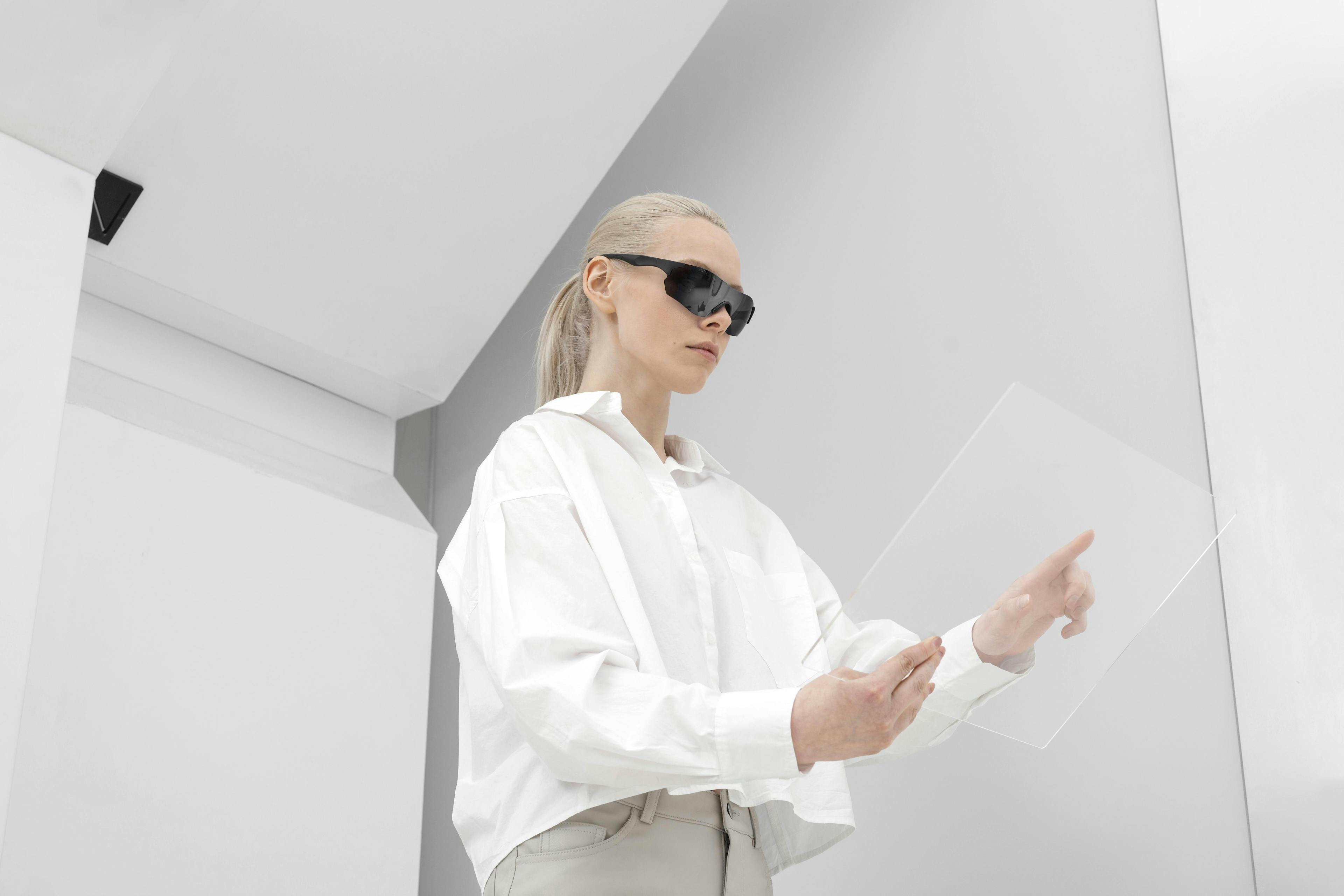The e-commerce experience has not changed in 15 years
Most classic e-commerce sites are built in the same way:
- At first, the consumer arrives on a home page presenting the latest collection put forward by the brand.
Shootings with the models, new pieces, a universe and a well-defined theme... - Then the consumer will be able to browse through the category pages in search of the product he is looking for, or to stroll towards what interests him. They can then navigate through the site via drop-down menus, or let themselves be directed by the site's suggestions.
- At the end of the journey, the customer will be on a specific product page, presenting the product from all angles, giving all the relative information and worn by one or several models. The next step is the purchase, the confirmation e-mail etc..
Globally, this buying path is the SAME for ALL consumers on ALL e-commerce sites.
However, fashion is a unique industry and needs to find new ways to amaze the consumer even through online shopping.
So what opportunities are available to these players in 2022?
New e-commerce experiences for fashion
The chatbot to accompany the customer and personalize his experience.
Customer support is essential on an e-commerce, the consumer must be reassured at any time and find answers to these questions quickly: the chatbot is therefore an effective alternative.
This virtual assistant is often a robot with pre-programmed answers, however most users don't care if they are talking to a robot or a human behind the screen, as long as they find answers to their questions.
This allows consumers to quickly find answers to simple questions such as shipping and return policies, size recommendations, or finding an item more easily. Once they find the answer to their questions, they can go right back to shopping and proceed to the shopping cart.
It is a good tool to reassure the customer, but it is not a new customer experience, and this tool has not managed to convince all the companies, the craze for this option has decreased.
Metaverse as a new e-commerce solution?
Since the META announcements in October 2021, all the attention has turned to the metaverse, the NFTs and the famous web3.
The metaverse is a parallel and virtual world in which the user can project himself through a virtual reality headset. The hysteria caused by these announcements quickly faded away along with the excitement of NFTs and crypto-currencies, and above all, no customer experience for fashion has managed to dominate the market.
Some brands have tried their own metavers, such as Ambush with an e-shop in the form of a video game, the user could move in real time with his character, however it is complicated to imagine an e-commerce entirely based on a video game, it would be too constraining for novice users.
Printemps also proposed an experiment in collaboration with an artist in order to propose NFTs: "My first virtual store" in which the consumer could move with the help of a foreground camera in a garden presenting designer pieces.
But the problem remains the same, it is complicated today to offer a "video game" type experience to a generation older than the millenials.
The NFTs
At the same time, attention has turned to NFTs, the new darlings of fashion and luxury brands.
Easier to produce than metavers, all brands have decided to seize this fashion.
These "Non-Fungible Token" are unique digital objects based on the blockchain, certificates of digital authenticity.
Prada, Gucci, Paco Rabanne or Dolce & Gabbana, all these brands have proposed different ways to acquire these unique digital pieces, either through auctions or through different levels of rarity (and price).
Some brands have even simply acquired famous works, such as Tiffany & Co. which bought in 2022 an "Okapi" rocket, an NFT with the effigy of the brand proposed by Tom Sachs, a contemporary artist.
Some time after the metaverse craze initiated by Mark Zuckerberg and the META Group, the excitement died down just as quickly. The use of crypto-currencies, different wallets and blockchain is still very unclear to users, making it difficult for brands to come up with original NFTs.
Digital Fashion
So brands have turned to a new digital alternative to attract consumers online:
Digital fashion, an original and abstract concept for some, revolutionary for others, this new way of consuming fashion has been talked about a lot in the last year, shortly before the metavers and the NFTs.
Players like The Fabricant have been forerunners in the market, the concept is simple: sell fully digital clothes to consumers, they can then wear them on their photos or avatars.
In a world where social networks are at the heart of our daily life, it is logical to wear clothes only on photos, some pieces sold at auction were snatched at more than 10 000€.
But like other new digital experiences, the market is not yet mature, or consumers are not yet ready.
It's time to truly empower consumers
So what new, easy-to-implement and original experience could surprise the consumer so that they can project themselves without getting lost?
Mix&Match is an excellent way for e-tailers to offer consumers a way to project themselves, they can select the clothes of their choice to compose original outfits.
This virtual 2.0 fitting room allows you to match and mismatch looks endlessly by selecting different clothes in each category.
At Veesual we develop experiences to accompany consumers in creating their look:
It is possible to visualize assortments of different categories of clothing, but also to choose the mannequin in which the user identifies himself, and to visualize the looks of their choice on it.
You can find a similar experience with the brand La Redoute :
https://www.laredoute.fr/styling-experience.aspx#/
Want to know more about how to deliver a new customer experience to your consumers?
Contact us at hello@veesual.ai.
RESOURCES
Discover our new article

"Complete the Look" Banners : is it enough ?
Scroll through any product page on a fashion eCommerce site and chances are you’ll see it: a “Wear it With” or “How to Style It” section, usually nestled just beneath the product. These are variations of what many fashion brands refer to as “Complete the Look” banners—a quick way to suggest complementary items that finish an outfit.

Has Online Shopping Lost Its Spark?
For years, e-commerce has delivered on convenience, speed, and scale. But something essential may have been lost along the way: the joy of shopping.

5 Ways Virtual Fitting Can Elevate Your Fashion Brand’s Online Presence
Virtual fitting has become a must-have in fashion e-commerce. Just like everything in fashion, ignoring the trend means falling behind. Virtual Fitting is more than a nice-to-have, it boosts your online shopping experience while making it more accessible and engaging for everyone.

